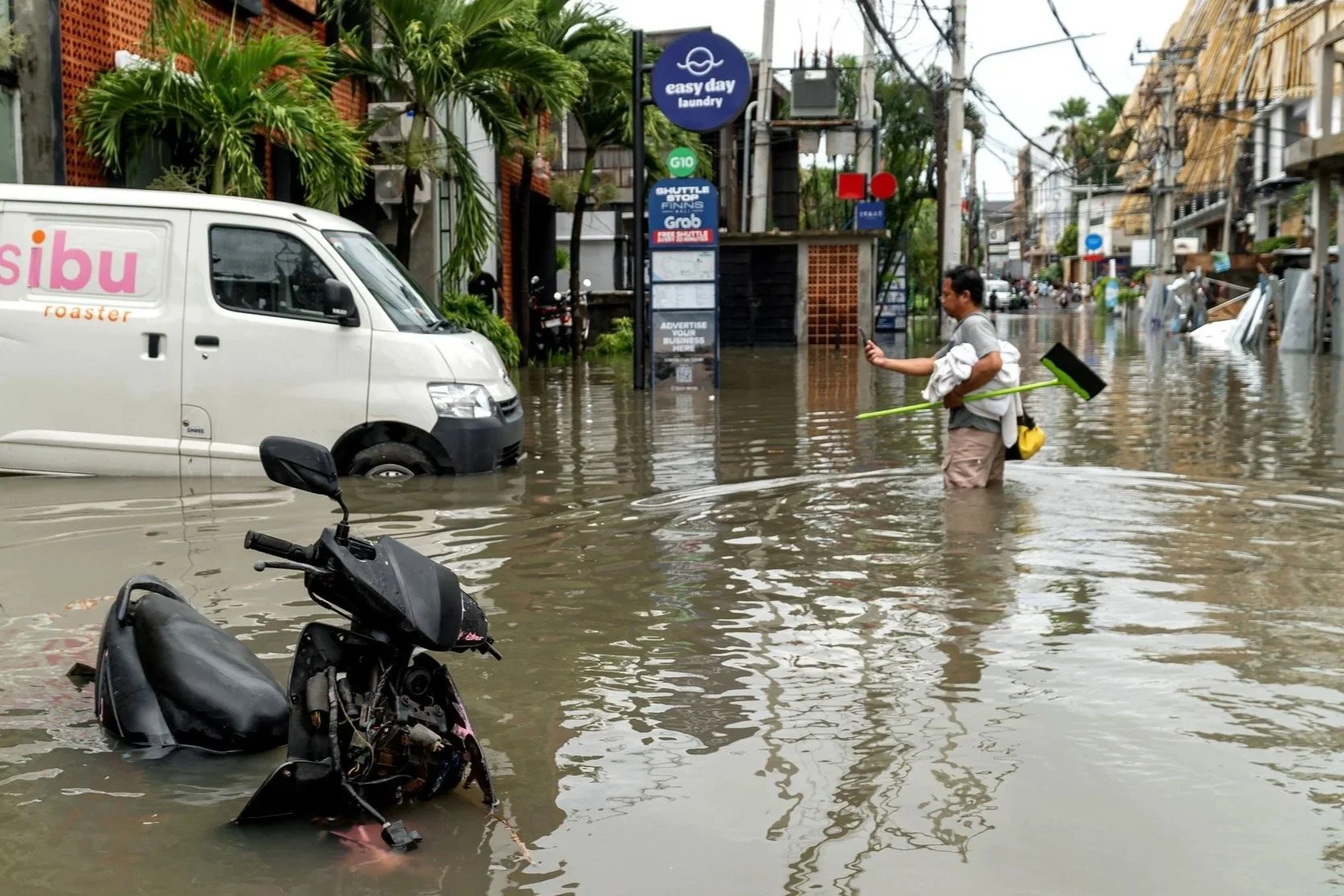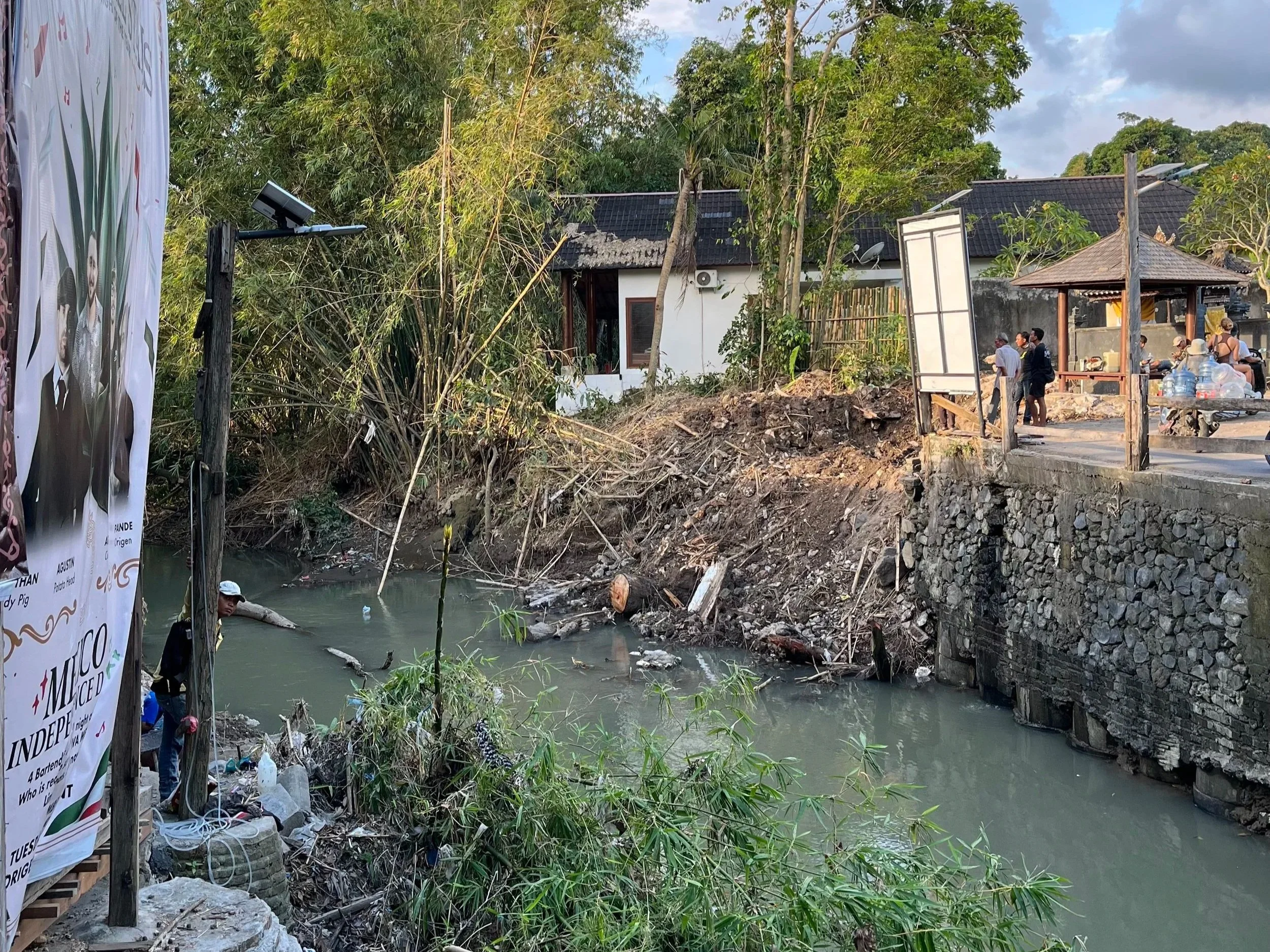Bali's September 2025 Floods: A Wake-Up Call for the Island
Sri Kahyangan Alley in Berawa was flooded following heavy rainfall in Bali.
Source of photo: China Xinhua News (Facebook page).
On the 9th of September 2025, Bali experienced some of the worst floods in its recent history, an incident which then went on to tragically claim the lives of 18 people and spark discussions about what the future has in store for the island. For 24 hours, torrential rains poured down, with some areas receiving up to 385mm of rainfall, nearly three times the extreme weather threshold. After the onslaught of heavy rain, water management systems became overwhelmed.
By September the 10th, six of Bali's eight regencies were facing dramatic flooding. Denpasar saw water levels reach 2-3 meters in residential areas. The Simpang Dewa Ruci Underpass became a 3-meter-deep lake. Online, videos showed cars completely submerged and entire neighbourhoods transformed into rivers.
The human cost caused widespread shock and sadness throughout Bali, especially regarding the eighteen people who lost their lives, including a pregnant woman who was swept away while riding a motorcycle. More than 6,000 families had their lives disrupted, with over 500 people needing evacuation to emergency shelters.
The Extent of the Damage
The economic damage reached approximately $1.8 million USD in direct losses. Kumbasari Market in Denpasar was severely hit, with 474 kiosks and shophouses being destroyed in the area, a local hub built over generations gone in a day.
The Pererenan shortcut suffered damage following severe flooding, after two consecutive days of heavy rainfall caused the river to overflow.
Furthermore, 520 public facilities and three bridges were damaged. Major roads became near impossible to drive along, making it challenging for tourists to reach Ngurah Rai airport or for locals to access essential services. Despite the scenes that were shared across social media, tourism continued as usual, with the airport keeping its normal operations going and hotels getting back to business within days.
Why This Happened
Although extreme rainfall was the main culprit for the floods, several factors came together to create the disaster. Many experts have identified Bali’s rapid development as one of the primary causes for the flood, being that the island loses approximately 1,000 hectares of agricultural land per year to new developments.
In the past, rice fields have protected the island’s infrastructure by absorbing rainwater. The traditional subak system has historically directed water across the island. However, in recent years, land conversions have been on the rise, such as in Tabanan, which has lost over 2,600 hectares of farmland to development between 2018-2023. To add further fuel to the fire, waste management systems failed with over 200 tonnes of debris blocking rivers, causing what should have been manageable high water to turn into catastrophic flooding.
Government Response
President Prabowo Subianto visited communities affected by flooding in Denpasar.
Photo source: Prabowo Subianto’s official Facebook page.
The floods were met with quick action. The President, Prabowo Subianto, visited those areas most affected on September the 13th. Aid packages were distributed, and Governor Wayan Koster declared a week-long emergency, stating that “starting this year, the land conversion ban will align with Bali’s 100-year plan. From 2025 onward, no productive land can be converted into commercial facilities.” This is one of Bali’s most substantial changes to land usage policy, and if successfully enforced, should help to fight against environmental challenges such as this one. The official emergency status ended on September the 17th, after debris was cleared, the water went down and repairs began.
Preventing Climate Disasters in the Future
A worrying aspect to the floods is that they occurred during what should be Bali’s dry season. Seemingly, traditional weather patterns are changing, and climate projections back this up, suggesting that Indonesia is likely to face more extreme weather events as temperatures and sea-levels rise. Bali’s tourism industry may need to adapt; most of the infrastructure for tourists is in vulnerable coastal areas. Current approaches to development need to be reconsidered in order to protect and conserve Bali as a major tourist hotspot.
For those residing in Bali and local business owners, these events were truly heartbreaking. As a Bali based business, Bali Solve, our thoughts go out to all those affected.
Ultimately, from this tragedy, we can now only heed the lessons on how important it is to understand local risks, maintain comprehensive insurance and have emergency plans in place. Going forward, the island’s future depends on whether growth can happen in harmony with the environment, and the challenge now is making sure these lessons result in positive lasting changes for Bali and its people.
Written by Bali Solve Team
30 September 2025



